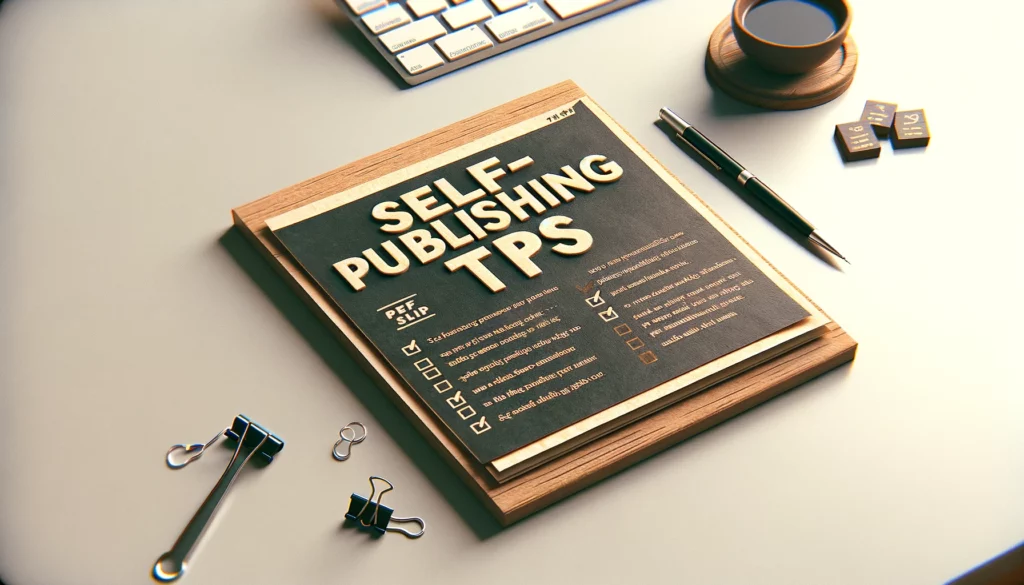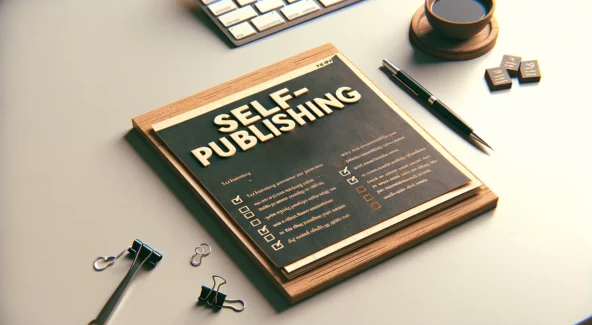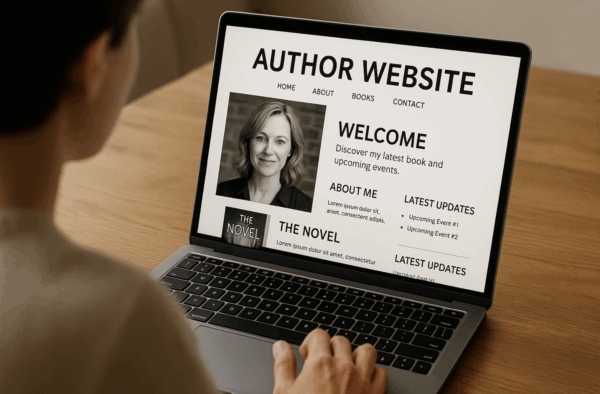In an era where the written word wields unprecedented influence, the world of self-publishing stands as a shining beacon of opportunity for aspiring authors. The traditional gatekeepers of the literary world – the established publishing houses – are no longer the only path to success. Today, self-publishing offers writers the extraordinary freedom to bring their unique stories to life, entirely on their own terms, without the need for a traditional publishing contract.
This democratization of publishing means that anyone with a tale to tell, a dream to share, or an idea to express can embark on the journey of becoming a published author. The process, now more accessible than ever, still holds its fair share of challenges. Crafting a compelling manuscript is merely the first step in a journey filled with critical stages like editing, cover design, formatting, distribution, and marketing. Each of these steps is vital in transforming a rough draft into a polished, reader-engaging book.
Understanding the nuances and intricacies of each phase can be overwhelming for first-time authors. That’s why this article aims to demystify the process by diving into the 9 essential steps to self publishing your first book. Whether you’re a novice writer taking your initial steps in the literary world or a seasoned author exploring new self publishing services and avenues, this guide is designed to provide a clear and comprehensive roadmap to help you navigate the exciting journey from manuscript to a successfully published book.

1. Understanding Self-Publishing Process
Self-publishing is the act of independently publishing your book on a platform without the involvement of a traditional publishing house. This approach gives authors complete control over the entire creative and selling process of print books, from writing and designing to marketing and distributing their work.
In self-publishing, and when you use a self publishing company, the author takes on the role of the publisher, making key decisions about every aspect of their own book.
Benefits of Self-Publishing
There are many benefits to opting for self-publishing over seeking a traditional publisher:
Creative Control
One of the most significant advantages of self-publishing is the level of creative control it affords authors. This autonomy extends to every aspect of the book, from the intricacies of the content to the nuances of cover design and the layout of the book.
Traditional publishing often involves compromises, with editors and publishers influencing content decisions to align with market trends or house styles. In self-publishing, the author retains the authority to make final decisions, ensuring the book truly reflects their vision.
This control is particularly valuable for authors who have a specific aesthetic or thematic concept they wish to maintain, allowing for a more authentic and personal expression of their work.
Higher Royalties
Financially, self-publishing can be more lucrative for authors compared to traditional publishing routes. In a conventional publishing setup, authors receive a fraction of each book’s sale price as royalties, with the majority shared between the publisher, distributors, and retailers.
In contrast, self-publishing platforms often offer higher royalty rates, sometimes up to 70% of the sale price, significantly increasing the author’s earnings per book. This model can be especially beneficial for authors who successfully market their book and achieve substantial sales, as they stand to gain a larger portion of the book sales profits directly.
Faster Time to Market
The journey from manuscript to a published book can be prolonged in traditional publishing, often taking several years. This timeline includes the processes of securing an agent, finding a publisher, and then going through the various stages of editing, design, and marketing.
Self-publishing dramatically cuts down this timeline. Once the manuscript is ready, authors can publish their work in a matter of weeks or even days, using self-publishing platforms. This expedited process allows authors to respond more quickly to market trends, timely topics, or personal inspiration, keeping their work relevant and timely.
Start Your Publishing Journey FOR FREEDirect Reader Engagement
Self-publishing offers a unique opportunity for authors to engage directly with their readers. This direct line of communication can be fostered through social media, author websites, and email newsletters, enabling authors to build a dedicated fan base.
This engagement not only helps in marketing the current book but also in establishing a loyal readership for future works. Authors can receive immediate feedback, participate in discussions about their book, and connect with their audience on a personal level, creating a sense of community and loyalty around their work.
Niche Markets
For authors writing in niche genres or about specialized topics, self-publishing provides a platform to reach their specific audience directly. Traditional publishers often shy away from niche topics due to perceived lower market demand.
However, self-publishing allows authors to tap into these specialized markets and connect with readers who are actively seeking content in these areas. By utilizing targeted marketing strategies and leveraging online communities, authors can successfully promote their work to audiences that the traditional publishing route might not reach.The Role of Self-Publishing Platforms
The landscape of self-publishing has evolved dramatically, transforming from a daunting task filled with challenges and complexities to a more streamlined and accessible process. This change is largely due to the emergence and evolution of self-publishing platforms, which have revolutionized the way indie authors bring their books to market.
Modern self-publishing platforms offer a range of services to assist authors at every stage of their journey. These services typically include intuitive manuscript editing tools, creative cover design options, and efficient global distribution channels. By harnessing the power of technology, these platforms simplify tasks that once required extensive expertise and resources.
For example, platforms like Spines utilize AI to further streamline and enhance these processes, offering unique tools tailored to the needs of self-publishing authors. This advanced technology enables writers to focus more on their creative process and less on the technicalities of publishing.
The availability of such comprehensive support has opened the door for more writers to realize their dreams. It allows them to bring their ideas to fruition and share their stories with the world, bypassing the steep learning curve that was once an integral part of the self-publishing journey. As a result, the self-publishing industry has become more inclusive and diverse, offering a platform for voices that might have otherwise gone unheard.
2. Proofreading and Editing
Editing and proofreading are crucial steps in the self-publishing journey, significantly impacting the quality and success of your book. These processes involve much more than just grammar checks. They refine the clarity, coherence, style, and overall readability of your manuscript, ensuring that your book effectively communicates its message and is free from errors that could distract or confuse readers.
Tips and Strategies for Effective Editing
- Start with Structural Editing: Begin by examining the big picture aspects of your manuscript, such as structural coherence, plot consistency, character development, and pacing. Ensure that your story or content flows logically and engagingly.
- Move to Copy Editing: Focus on the finer details of language use, including sentence structure, clarity, tone, and voice. Aim to make your writing concise and free from jargon or unnecessarily complex language.
- Proofreading is Key: As the final step, proofreading involves hunting for spelling mistakes, grammatical errors, and punctuation issues. This stage is crucial for polishing your manuscript to a professional standard.
- Take Breaks: Editing and proofreading require a fresh perspective. Take breaks between readings to return to your manuscript with renewed focus.
- Get External Feedback: An external perspective can be invaluable. Consider feedback from beta readers, writing groups, or professional editors.
- Read Aloud: Reading your manuscript aloud can help catch errors and awkward phrasings that are often missed when reading silently.
Incorporating Technology in Editing
Incorporating technology, such as the AI-driven tools provided by platforms like Spines, can further enhance the proofreading and editing process. These tools offer advanced grammar checks, style and consistency analysis, and the efficiency of quickly identifying areas that need attention. While such technology is a valuable asset, the essence of editing remains in the author’s keen eye and creative judgment.
By focusing on these key aspects of proofreading and editing, authors can significantly elevate the quality of their manuscripts, ensuring a polished and professional final product.
3. Formatting Your Book for Publication
Formatting is a crucial yet often overlooked step in the self-publishing process, especially by first-time authors. The way your book is formatted significantly influences its aesthetic appeal and the reader’s experience. Proper formatting ensures that your book is accessible, readable, and professionally presented.
Key Elements of Book Formatting
- Font Type and Size: Choose fonts that are easy on the eyes. Classic fonts like Times New Roman or Arial are often preferred for their readability.
- Margin Widths, Text Alignment, and Paragraph Spacing: These elements contribute to the overall readability and aesthetic of your book. Be mindful of creating a layout that is both visually pleasing and practical.
- Chapter Headings and Styling: Consistency in chapter headings and other stylistic elements is key to a professional look.
- Genre Considerations: Different genres might require different formatting approaches. For instance, non-fiction might demand a different text layout or the inclusion of elements like footnotes.
- Book Size: The overall size of your book affects its layout and how text appears on the page.
- eBook Formatting: If publishing digitally, consider the unique requirements for e-books, such as reflowable text and compatibility with various e-readers.
Utilizing Formatting Tools
Professional formatting tools and software can significantly ease the formatting process. Many authors find templates helpful, but it’s important to customize these to fit the unique needs of your book. Platforms like Spines offer user-friendly formatting interfaces and customizable templates, which can be particularly helpful for those less familiar with technical aspects of formatting. However, the focus should remain on your personal touch and adherence to formatting standards, regardless of the tools used.
The Importance of Professional Formatting
Attention to detail in formatting is a critical step towards creating a professional-quality book. It’s not just about making your book look good; it’s about ensuring an enjoyable and seamless reading experience for your audience. Whether you’re using advanced tools like those provided by Spines or more traditional methods, the goal is the same: a well-formatted book that stands out in the competitive world of self-publishing.
Start Your Publishing Journey FOR FREE4. Designing a Captivating Book Cover
Contrary to the adage, “Don’t judge a book by its cover,” the reality in the publishing world is quite different. A book cover is often the first point of contact between your book and potential readers, playing a pivotal role in attracting attention, setting expectations, and communicating the essence of your book. A well-designed cover is crucial in boosting your book’s marketability, enticing readers to pick it up and explore its pages.
Tips for Designing a Compelling Cover
- Reflect Your Book’s Content: The cover should give readers a glimpse into the genre and tone of your book. Choose imagery and design elements that resonate with your story’s mood and genre.
- Balance Text and Images: Ensure that the title and author’s name are clear and readable. Any imagery or graphics should complement the text, not overpower it.
- Choose Colors Wisely: The colors on your cover can evoke various emotions and expectations. Select a palette that aligns with the mood of your book.
- Keep It Simple: A cluttered cover can be overwhelming. Aim for simplicity to ensure your cover is effective and professional.
- Consider Trends, but Be Unique: While keeping current trends in mind, strive to create a cover that stands out with unique visual appeal.
- Get Feedback: Before finalizing your cover, seek feedback from potential readers or design professionals.
Leveraging Design Tools
For those without a background in graphic design, creating a book cover can be daunting. This is where design tools and platforms can be immensely helpful. They provide user-friendly interfaces and customizable templates that make professional cover design more accessible. Some platforms, such as Spines, offer AI-powered tools that suggest design elements based on your book’s genre and content, providing a helpful starting point.
Whether you’re using advanced design platforms or more traditional methods, the focus should be on creating a cover that accurately represents your book and appeals to your target audience. A well-thought-out cover is a key marketing tool in the competitive world of self-publishing, often making the difference between a book that gets noticed and one that does not.
5. Manuscript Upload
The manuscript upload marks a significant milestone in the self-publishing process, transitioning your work from a private document to a publication-ready file. This stage is not just about submitting your completed manuscript; it’s about ensuring it meets the required standards and formats for publishing. The quality of your uploaded manuscript directly influences the subsequent publishing steps, making this a critical phase in your journey to becoming a published author.
Best Practices for Ensuring Manuscript Readiness
- Final Proofreading: Before uploading, conduct a final proofread to catch any lingering typos, grammatical errors, or formatting inconsistencies.
- Format According to Guidelines: Ensure your manuscript adheres to the formatting specifications of your chosen publishing platform, including standard font types, sizes, margin settings, and document formats.
- Check Image Quality: For manuscripts with images, verify that they are high-resolution and correctly formatted, as poor quality or formatting can impact the final appearance of your book.
- Metadata Matters: Be ready to provide essential metadata during the upload, such as the book’s title, author name, description, keywords, and ISBN. Accurate metadata enhances your book’s discoverability.
- Backup Your Manuscript: Maintain a backup copy of your manuscript in a separate location to safeguard against any technical issues during the upload.
Streamlining the Upload Process
Many self-publishing platforms, including Spines, offer user-friendly interfaces to simplify the manuscript upload process. These platforms may feature automated checks for common formatting issues, secure and reliable upload mechanisms, and assistance with metadata entry. While platforms like Spines can facilitate a smoother upload process, the focus remains on the author’s preparation and attention to detail to ensure the manuscript is optimally prepared for publishing.
By adhering to these best practices and possibly leveraging the efficiency of a self-publishing platform, authors can save time and ensure their manuscript is well-prepared for the next stages of their publishing journey.
6. Expanding Reach with Audiobook Creation
The rise of audiobooks in recent years has marked a significant shift in the publishing industry. Their growing popularity is attributed to the convenience they offer, enabling readers to enjoy books while multitasking or on the move. The immersive experience of listening to a story, brought to life through expressive and emotive narration, adds a new dimension to the joy of reading.
For authors, creating an audiobook version of their work represents an opportunity to reach a broader audience, including audio-preferred readers and individuals with visual impairments.
Steps for Creating an Audiobook Version of Your Book
- Prepare Your Manuscript for Audio: Adapt your written content for audio narration. This may include modifications to ensure that the text is suitable for spoken delivery.
- Choose the Right Narrator: The narrator plays a crucial role in the success of an audiobook. Select a voice that aligns with the tone and genre of your book, taking into account factors like gender, accent, and narrative ability.
- Record the Audiobook: Ensure a quiet environment and use professional recording equipment for clear, high-quality audio.
- Editing and Post-Production: Post-recording, the audio needs editing for clarity and consistency, including removing mistakes and background noises, and fine-tuning pauses and pacing.
- Format the Audiobook: Format the final audio to meet the specifications of audiobook platforms, which often have specific file type and quality standards.
- Distribution: Distribute your audiobook on popular platforms like Audible, iTunes, and Google Play Books to ensure wide accessibility.
Leveraging Technology in Audiobook Production
Advanced technology, like the AI tools offered by platforms such as Spines, can streamline the audiobook creation process. These tools can assist in tasks like narrator selection, efficient text-to-speech conversion, and post-production editing, offering a more efficient alternative to traditional audiobook production methods. However, the essence of audiobook creation remains in the quality of the narration and the emotional connection it creates with the listener.
Start Your Publishing Journey FOR FREEBy understanding and utilizing these steps, along with available technological advancements, authors can effectively expand their reach and connect with audiences in the dynamic world of audiobooks.
7. Ordering Your Copies
Once your book is ready for publication, an important decision is how you want it printed and distributed. Self-published authors typically have two primary options: print-on-demand (POD) and bulk ordering.
Print-on-Demand (POD): This flexible option allows copies of your book to be printed as orders come in, either from online retailers or directly from sales on platforms like Amazon or your personal website. It minimizes upfront costs and storage needs, making it ideal for authors who prefer a low-risk option or want to test the market without a large initial investment.
Bulk Ordering: This involves printing a large quantity of copies at once. Opting for bulk ordering reduces the cost per unit and is beneficial if you have a guaranteed audience or plan significant distribution through various channels, such as online retailers, brick and mortar stores, events, book signings, or in physical bookstores. This option requires a higher initial investment but can be more cost-effective in the long run for authors expecting high sales volumes or extensive distribution.
By choosing the right printing and distribution option, whether it’s the flexibility of POD or the scale of bulk ordering, authors can effectively reach their audience through both online retailers and brick and mortar stores, maximizing the availability and accessibility of their book to readers.
Choosing the Right Printing Options for Your Book
- Paper Quality: Decide between standard and premium paper qualities based on your book type and budget.
- Binding Type: Choose from options like paperback, hardcover, and spiral binding. Your choice will depend on the desired aesthetic and cost considerations.
- Cover Finish: Matte or glossy finishes each offer a different look. Matte is sophisticated, while glossy tends to be more vibrant.
- Size and Layout: Select the size and layout that best suits your content and target audience.
- Color Options: If your book includes images or illustrations, decide between full color or black and white printing.
Streamlining the Ordering Process
Many self-publishing platforms provide user-friendly interfaces for selecting printing options and placing orders. These platforms often support both a print on demand service and bulk ordering, allowing authors to choose based on their distribution strategy and budget. A platform like Spines, for example, might offer real-time cost estimation and quality assurance checks, simplifying the decision-making process.
Regardless of whether an author chooses a service like Spines or a different method, the key to joining the ranks of successful self published authors is to select printing and distribution options that align with their goals, budget, and audience preferences. These choices play a significant role in the overall success and accessibility of a self-published book.
8. Maximizing Online Presence: Social Media and Author Website
In today’s digital age, an effective online presence is crucial for self-publishers. This involves two key components: leveraging social media for marketing and building a dedicated author website and blog.
Leveraging Social Media for Marketing and Promotion: Social media platforms are powerful tools for authors to build their brand, connect with readers, and market their books. The key is to create engaging content that resonates with your target audience. This can include teasers of your book, insights into your writing process, or themes related to your book’s content. Regular posting helps maintain visibility and engagement with your audience. It’s also essential to interact with your followers through comments and messages, building a community around your work.
Paid advertising options on platforms like Facebook, Instagram, and Twitter can also be utilized to reach a broader audience. These targeted ads can be customized to appeal to specific demographics, interests, and reading preferences, increasing the likelihood of reaching potential readers who are most likely to be interested in your book.
Building an Author Website and Blog: An author website and blog serve as the cornerstone of your online presence. It acts as a centralized platform where readers can learn more about you, your work, and any upcoming projects or events. Key elements of an author website include a compelling author bio, detailed book descriptions, links to purchase your books, and information on upcoming events or signings.
A blog on your website provides a medium to share more content related to your writing, offer insights into your creative process, and discuss topics that interest your reader base. Regularly updating your blog can improve your website’s search engine optimization (SEO), making it more likely for potential readers to find you online. Additionally, a blog is an excellent way to keep your audience engaged between book releases, providing value and fostering loyalty among your readers.
9. Enhancing Reader Engagement and Professional Networks
To successfully navigate the world of self-publishing, authors must not only focus on writing but also on building relationships and communities. This can be achieved through effective email marketing and active participation in writer communities.
Email Marketing: Building a robust email subscriber list is a powerful way for authors to directly connect with their audience. Email marketing goes beyond promoting book launches; it’s about creating a continuous dialogue with your readers. Regular updates, exclusive content, and personalized messages help cultivate a loyal reader base. When a new book is ready to launch, this established connection makes your audience more receptive to your promotional efforts.
To grow your subscriber list, consider offering incentives like a free chapter, a short story, or a downloadable resource related to your book’s topic. These incentives can encourage website visitors or social media followers to subscribe to your emails. Regular newsletters with valuable content can keep subscribers engaged, while exclusive sneak peeks or early access to new releases can make them feel like part of a special community.
Start Your Publishing Journey FOR FREENetworking and Community Building: For self-publishing authors, being part of writer communities, both online and offline, is invaluable. Online forums, social media groups, and writing platforms offer spaces to share experiences, seek advice, and gain feedback. These communities can provide moral support, writing tips, and insights into the publishing process, which are particularly beneficial for new authors.
Offline, attending literary events, writer workshops, and book fairs allows for face-to-face networking opportunities. These events are not just about promoting your book; they’re avenues for building relationships with other authors, industry professionals, and potential readers. Participating in local writing groups or book clubs can also enhance your presence in the literary community.
In both online and offline settings, networking and community building are about give and take. Engaging with fellow writers, sharing knowledge, and supporting others’ works can open doors to collaborations, cross-promotions, and new learning opportunities, enriching your journey as an author.
Steps to Self Publishing with Spines
Looking to self-publish your book? If you are an aspiring author with a story to tell, we encourage you to explore the exciting world of self-publishing with Spines.
Embrace the opportunity to bring your ideas to life and share them with a global audience. Remember, every successful author started with a single step – the decision to write and self-publish their work.
Utilizing a platform like Spines will help you to navigate your self-publishing journey.
With its user-friendly tools, AI-driven solutions, and comprehensive support, Spines is equipped to help you transform your manuscript into a published masterpiece.
Take the first step today. Visit Spines.com OR sign up and start for free
Embark on this adventure with confidence and let Spines be your guide to publishing success.









